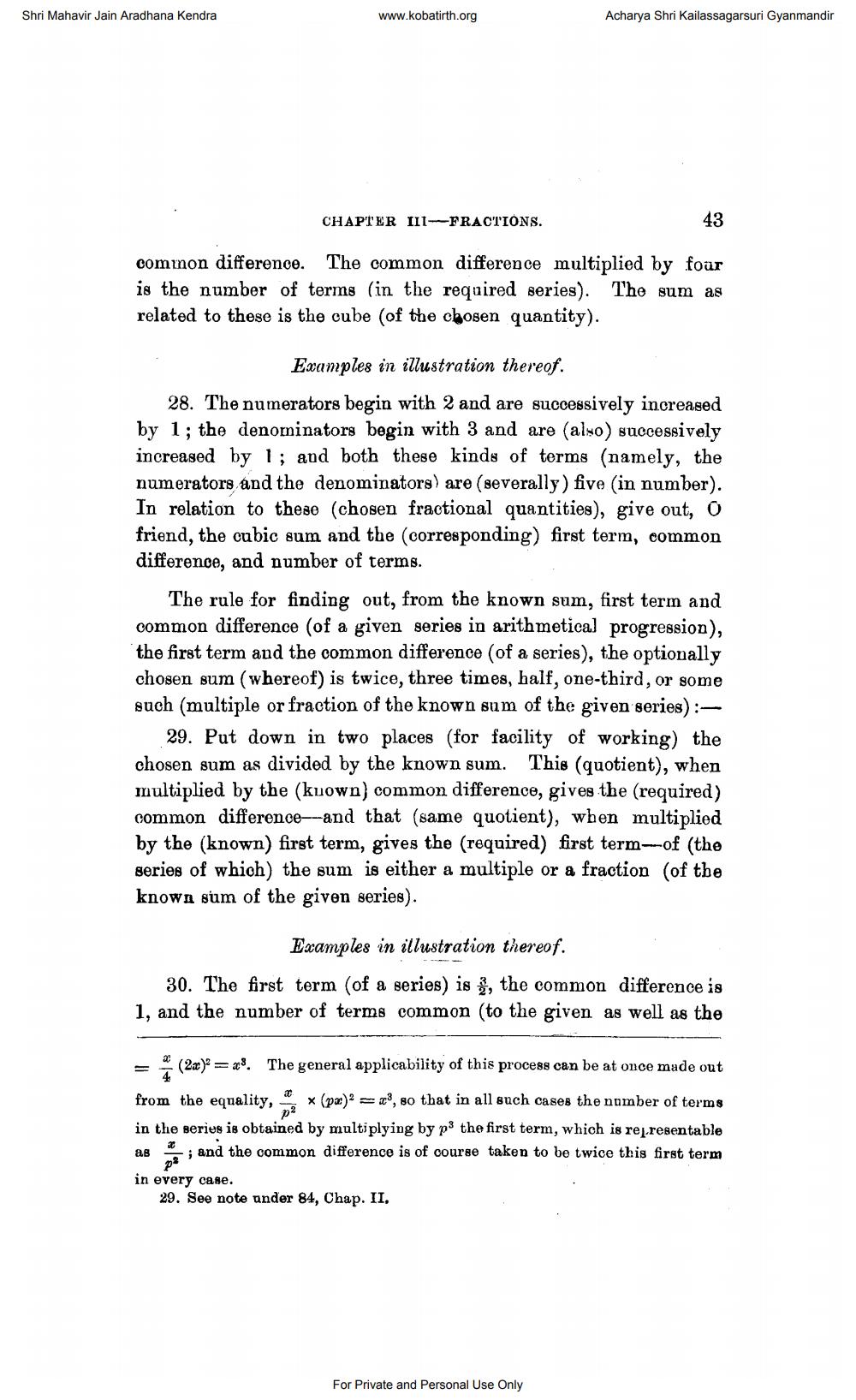________________
Shri Mahavir Jain Aradhana Kendra
www.kobatirth.org
Acharya Shri Kailassagarsuri Gyanmandir
CHAPTER III-FRACTIONS.
43
common difference. The common difference multiplied by four is the number of terms (in the required series). The sum as related to these is the cube (of the chosen quantity).
Examples in illustration thereof.
28. The numerators begin with 2 and are successively increased by 1; the denominators begin with 3 and are (alxo) successively increased by l; and both these kinds of terms (namely, the numerators and the denominators) are severally) five (in number). In relation to these (chosen fractional quantities), give out, o friend, the cubic sum and the corresponding) first term, common difference, and number of terms.
The rule for finding out, from the known sum, first term and common difference (of a given series in arithmetical progression), the first term and the common difference (of a series), the optionally chosen sum (whereof) is twice, three times, half, one-third, or some such (multiple or fraction of the known sum of the given series):
29. Put down in two places (for facility of working) the chosen sum as divided by the known sum. This (quotient), when multiplied by the (kuown) common difference, gives the (required) common difference--and that (same quotient), when multiplied by the (known) first term, gives the (required) first term--of (the series of which the sum is either a multiple or a fraction (of the known sum of the given series).
Examples in illustration thereof. 30. The first term (of a series) is î, the common difference is 1, and the number of terms common (to the given as well as the
= (2x) = <3. The general applicability of this process can be at once made out from the equality, (px)2 = 2, 80 that in all such cases the number of terms in the series is obtained by multiplying by p3 the first term, which is representable
and the common difference is of course taken to be twice this first term in every case.
29. See note ander 84, Chap. II,
For Private and Personal Use Only




